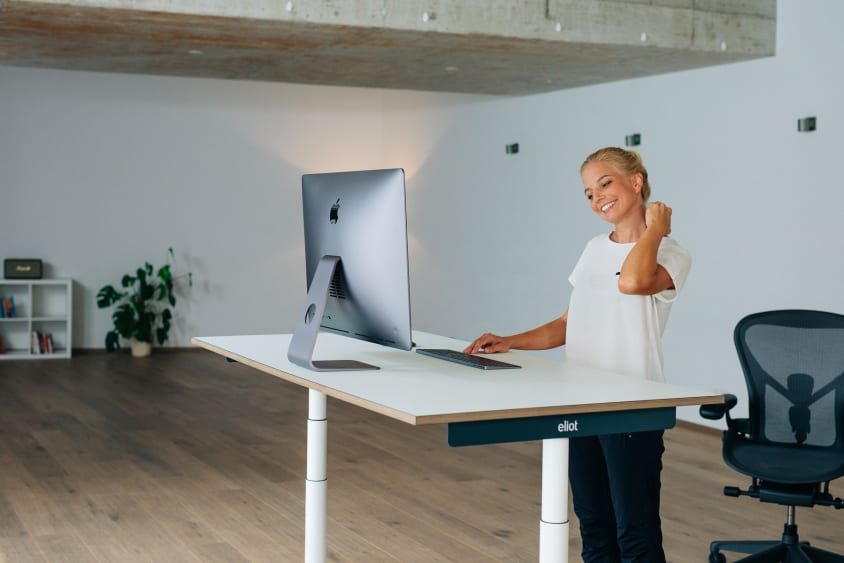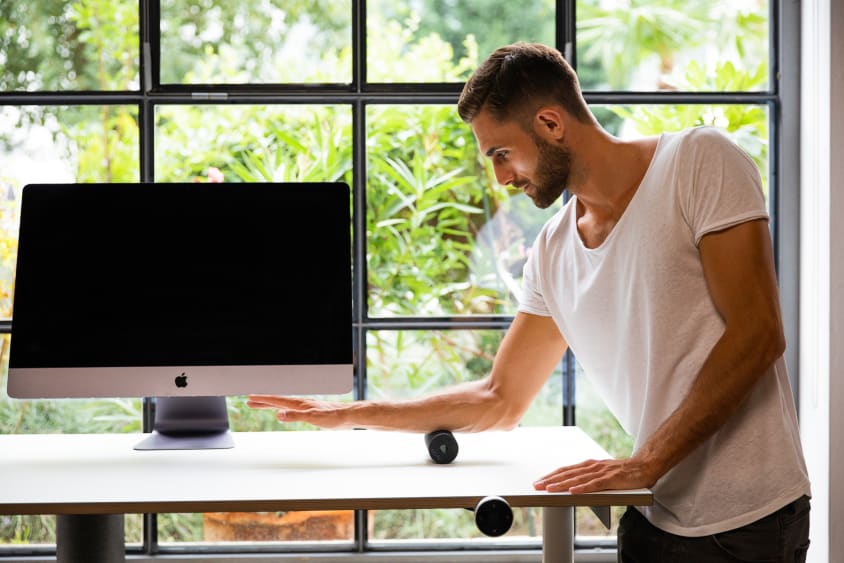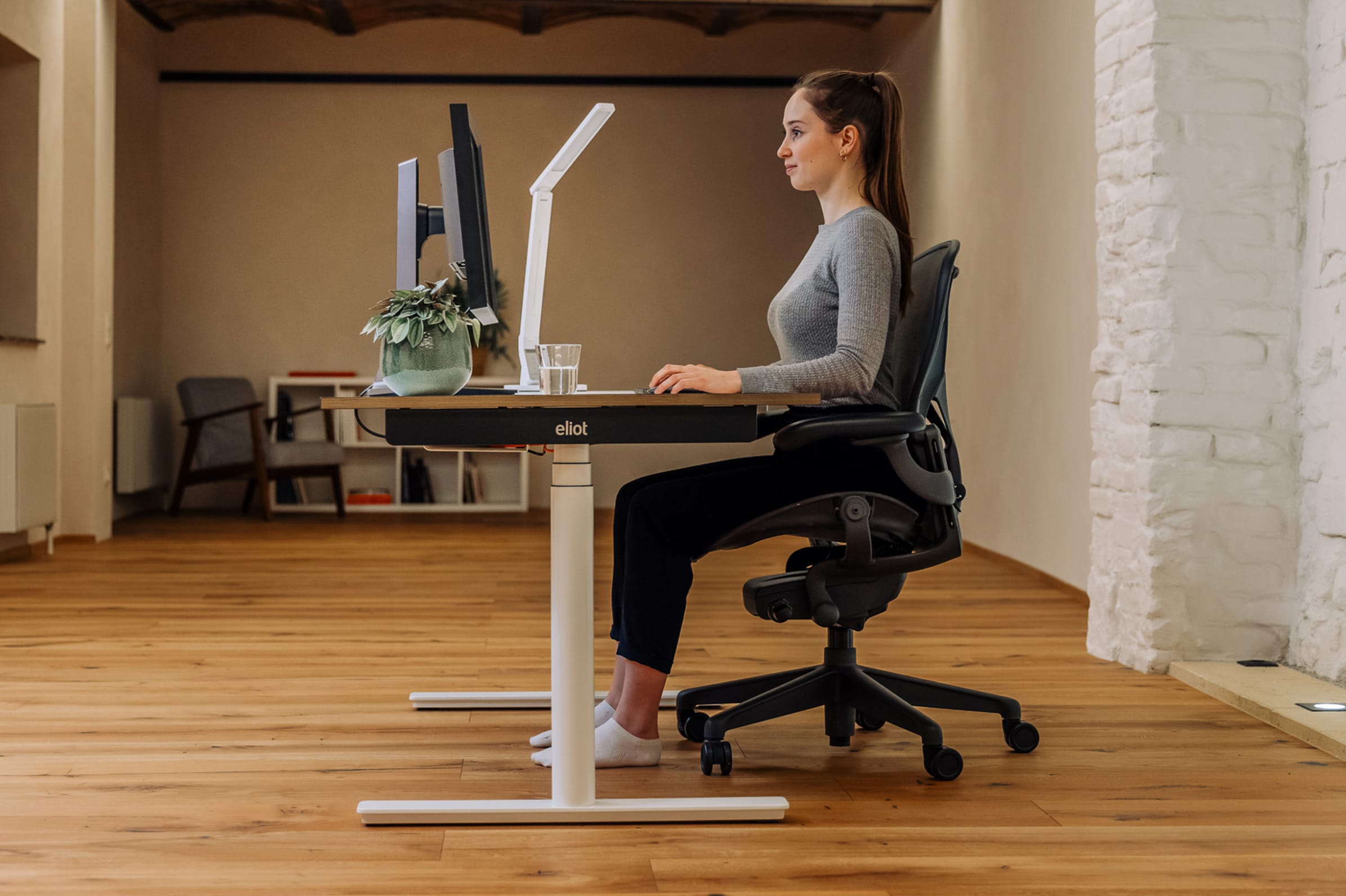
Occupational ergonomics – what you should know

What occupational ergonomics means and how you can create a more ergonomic workplace.
The importance of a properly designed workplace is often overlooked. Occupational ergonomics help to support your movements and minimise strain. It is important to set up your work environment accordingly and take certain behaviours into consideration.
You can minimise poor posture and pain through balanced movements and an ergonomic workplace. Find out the benefits that await you below.
01. What is ergonomics?
The term ‘ergonomics’ is based on the Ancient Greek words ‘ergon’ (work) and 'nomos’ (laws). Ergonomics is often defined as ‘the scientific study of human work’. But that sounds a little abstract, doesn’t it? More simply put, ergonomics deals with adapting your workplace, work equipment and systems to your personal requirements. For you, this means improved wellbeing at work and increased productivity.
02. Your ergonomic workplace: 8 key points to consider
- Proper workplace lighting & natural light
- Optimum temperature and humidity
- Little noise
- Adequate space
- Healthy upper body and leg position
- Perfect chair height
- Optimum chair width
- Height-adjustable desk
03. Your feel-good office through ergonomic workplace design – how to design your workplace
For optimum concentration, the room temperature should be between 20 and 22°C. Ensure plenty of fresh air and adequate natural light - artificial lighting should be avoided where possible. To prevent windows and sources of light from reflecting off your screen, your desk should be situated in front of the window with the back against it. Daylight is best from a side angle as backlight can strain the eyes.
For your personal feel-good atmosphere, you should set up your office or home office (where possible) to personally suit you. This might mean a few plants, which also improve room climate, or rugs which also absorb sound and act as noise protection.
And, since back, neck and shoulder pain are the most common causes of poor posture that we have become familiar with in the office, you should remember to stand up regularly throughout the working day or change your sitting position. Another key factor for a healthy desk and workstation is that your office chair, desk and monitor are perfectly aligned with one another. Also, your monitor shouldn’t be too small. Working on a (too small) laptop screen is both bad for your posture and eyes.
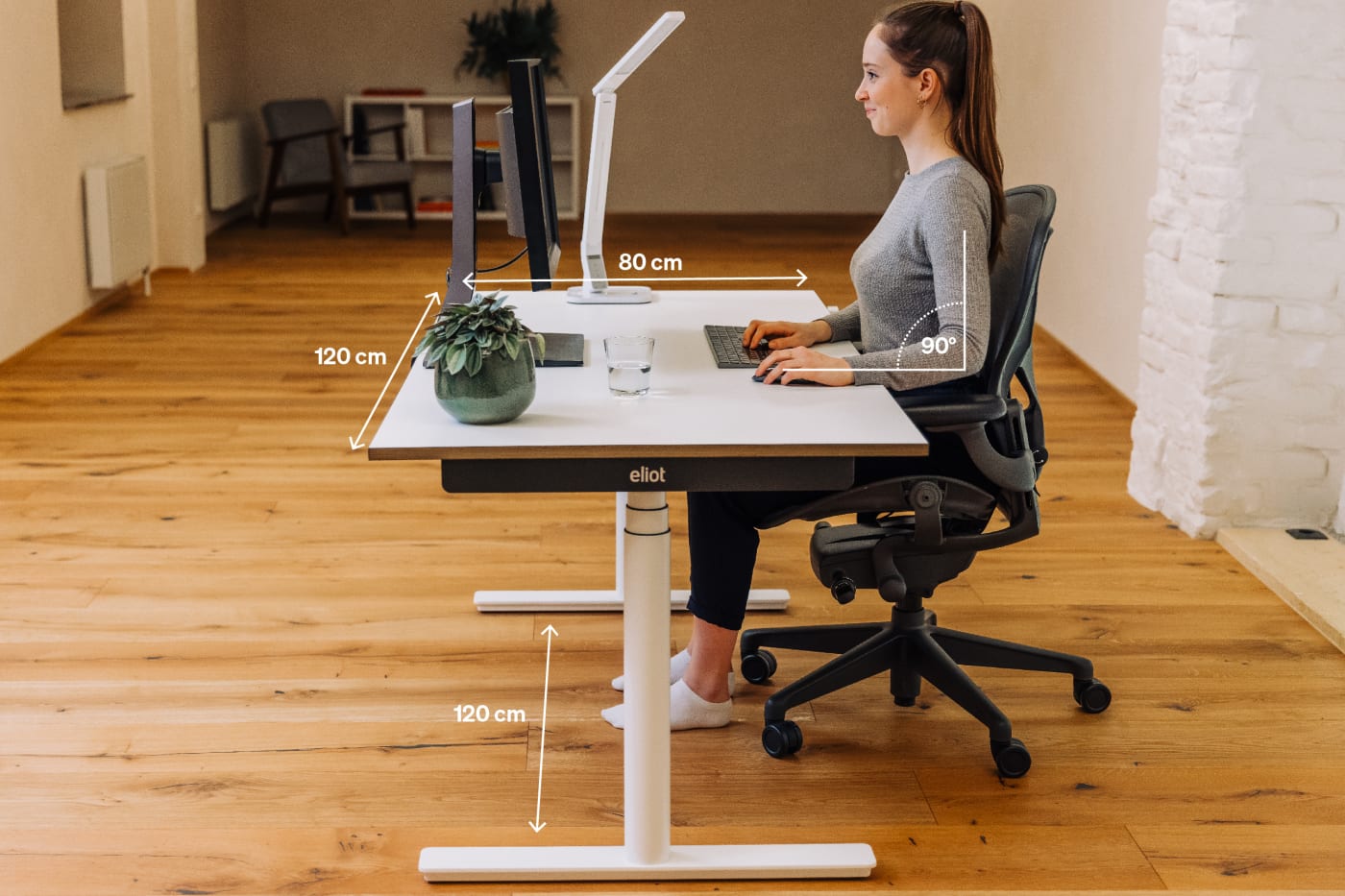
The ergonomic desk
Ergonomic working can only really happen if your desk is optimally set up. Height-adjustable desks are particularly useful here as they allow working while standing and can be optimally adjusted based on your height. Your desk should be at least 80 cm deep and 160 cm wide to provide enough space for your work equipment. To achieve the optimum desk height, your elbow and knee joints should roughly form a 90° angle, allowing you to rest your forearms on the desk. Your shoulders should be relaxed while sitting or standing at the desk. This ensures the optimum height for your standing workstation. In order to give your legs enough freedom of movement under the desk, you should have sufficient width (approx. 120 cm) and depth (approx. 80 cm). Cables and power strips, waste bins and other items are best stored away. If you work while standing, even pressure should be placed on the soles of both feet. You should stand close to the desk and ensure an upright posture.
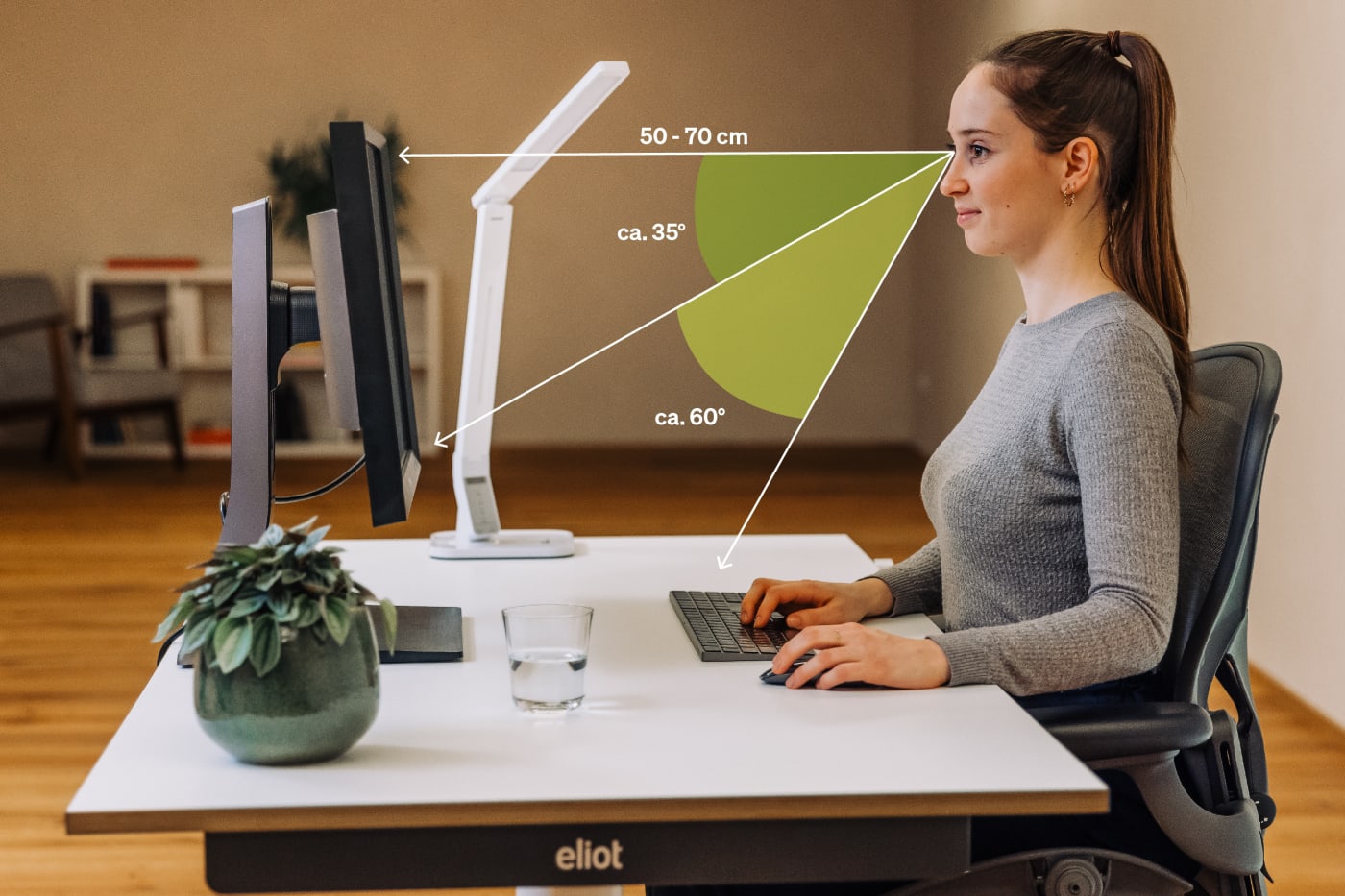
Ergonomic monitor position
To set up your workstation and ensure an ergonomic monitor height, the upper edge of the screen should be at eye level. You can also tilt the screen upwards slightly to see the entire screen better while keeping your spine straight. Your head should be around 50-70 cm from the monitor. This allows you to view the entire screen without having to turn your head in one direction. Make sure that your monitor isn’t too small. Working every day on a (too small) laptop screen is both bad for your posture and eyes.
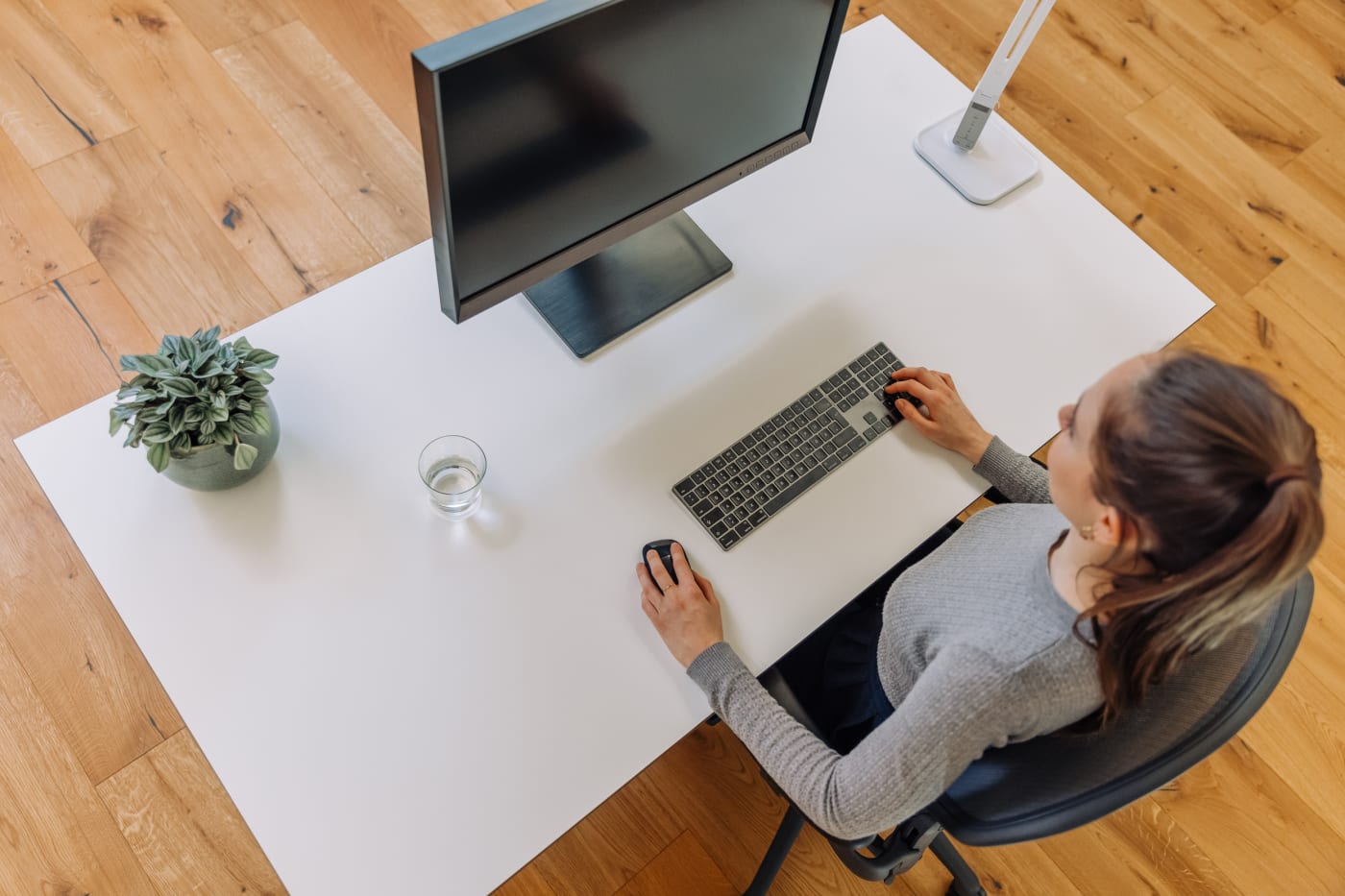
Setting up the keyboard and computer mouse for an ergonomic workstation
The keyboard and mouse should sit directly under your hands. Ideally, your wrists should be straight, rather than bent. As described above, your forearms should be fully or partially horizontal to the desk, allowing you to orientate yourself and use your keyboard and mouse while keeping your forearms in a stable position.

The ergonomic office chair and ergonomic sitting position
While sitting, around 40 percent more pressure is put on our spine compared to standing. An ergonomic office chair with a supportive backrest and armrests is therefore extremely important - not just because of the added comfort but also for our health. An ergonomic sitting posture is only possible if your upper and lower legs form a right angle and the soles of your feet are placed flat on the ground. Your thighs should be horizontal to the seat. Seat height depends on your height and should be around 42-53 cm tall and 40-48 cm wide. In order to protect your back and relieve the spine and intervertebral discs, you should use the entire area of the seat - not just the edge.

With these exercises you actively work on good posture.

